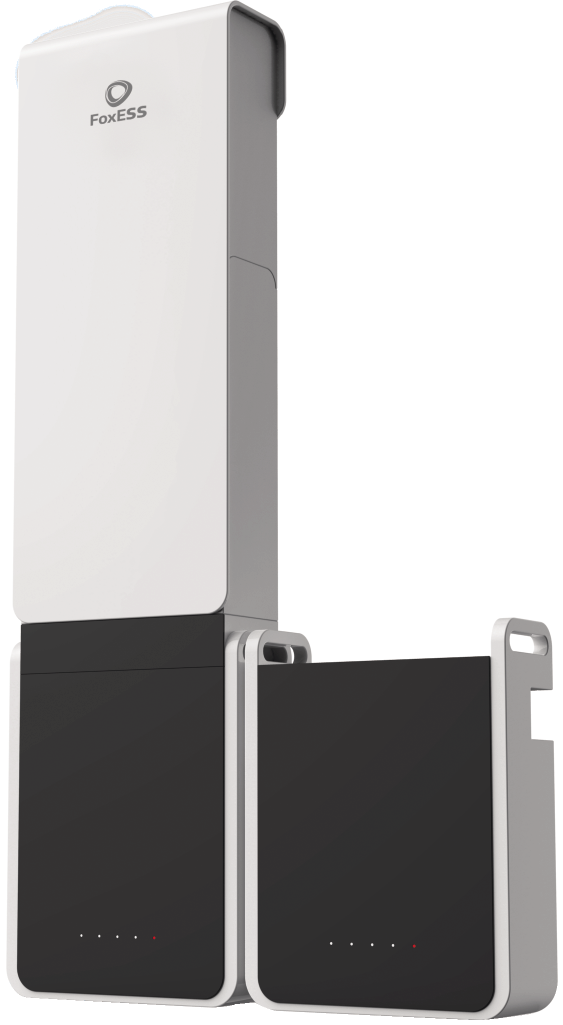In its debut, the PV industry’s latest manufacturer arrival FoxESS is launching a range of residential inverters in various established markets, including Europe, Australia, and North America. The company is making its global push with a variety of grid-tied string inverters, storage systems, and two all-in-one solutions.
The new inverter product offering starts at 0.7 kW capacity and goes up to 10 kW, covering the broad range of needs for residential solar PV customers. The smaller capacity models, the S Series, run from 0.7 kW up to 3 kW. These small and sleek inverters feature a single maximum power point tracking (MPPT) channel, come in single-phase versions, and offer home power generators a low start-up voltage of just 60 V, with the MPPT channel having a range of 50 V to 450 V.
In the slightly larger category, the E & F Series offers capacities between 3 kW and 6 kW, featuring dual MPPT but still single-phase. With the additional MPPT channel, Series E & F inverters provide for more flexibility in system design. The use of multiple MPPT channels has become more popular for installations on complicated roof spaces, or in cases when designs require PV arrays to be oriented in both south- and west-facing orientations simultaneously. For different temperatures, shading, and irradiation levels, there is a unique maximum power point. Increasing the number of maximum power point tracking channels allows for more uniform conditions on each channel, which in turn increases efficiency.
Only the T Series model, ranging in size from 3 kW to 10 kW, come as three-phase inverters. Depending on the size of the inverter, max efficiencies range from 98.1% to 98.3%. These slightly larger inverters have two MPPT trackers, each of which can accommodate a single string. The T-Series can also be used for smaller C&I installations, which include a remote monitoring app and allow for potential cost savings by avoiding site visits. With an IP65 rating, this inverter model has an enclosure that is sealed strongly enough to sustain rain and dust – making it suitable for outdoor installation.
All three models – the S-, the E & F-, and the T-Series – come battery-ready, with FoxESS emphasizing that their new-to-market devices have been fully optimized for project owners to upgrade their systems with battery storage. To this end, the company also developed its C-Series, a battery charger for AC-coupled solutions, and its H-Series battery. The latter is a 5.2 kWh scalable unit, but other battery variants, both low and high voltage, will be released shortly to allow for maximum flexibility and to offer storage solutions for all applications.
The extensive new FoxESS product portfolio also includes all-in-one solutions with its SR-A and SR-B Series, with AC-coupled batteries. Targeted to customers with an existing solar PV project, the SR-A solution includes a modified version of the C-Series charger, H-Series battery with built-in fuse protection, and battery management system. The company says that this ‘one box’ solution allows for installers and customers alike to easily integrate the system with a plug-and-play commissioning process, without requiring additional wiring and configuration of individual components. The all-in-one SR-B product offering, by contrast, is tailored to new solar+storage projects, and includes a grid-tied inverter.
One advantage of using an AC-coupled storage system over a DC-coupled system is that there is the potential to circumvent regulatory constraints. For example, in some markets, such as the United Kingdom, retrofitting DC-coupled storage requires adding a new feed-in tariff (FIT) meter and obtaining a new license.
“In the UK, retrofitting a hybrid inverter requires replacing the metering solution with a two-way device due to grid capability, which can lead to false readings on the FIT meter,” said Craig Woollaston, marketing manager at FoxESS. “It can also reduce earnings from the FIT owing to efficiency losses in and out of the battery prior to the generation being recorded on the FIT meter.”
These easy retrofitting options are aligned with maturing residential markets, as the first wave of installations under FIT support schemes are expiring their validity. Adding battery storage to boost self-consumption will likely be the most popular option for asset owners to still draw on the advantages of their installation. Flexibility in battery sizing can also help with optimizing the economics of such retrofits. While larger batteries can allow for a higher degree of self-sufficiency, currently self-sufficiency rates of more than 70% are still not cost-effective in most markets. But in years ahead that metric will likely increase further to 100%. Allowing for additional batteries to be attached in series, FoxESS says that its SR-A solution will support solar producers in expanding with the market.
Another highlight of the inverters is the export limitation. By adding storage at a later stage, or with changing national regulations, system owners may be inclined or obliged to change their system’s export behavior. This can happen, for example, when a system expires its FIT validity. Typically FITs are paid for 15 to 20 years. When that expires, the system owners may want to keep as much of their power as possible for self-consumption.
In some cases, owners will be able to sell power to an aggregator. In such situations, it can be necessary to fulfill contractual obligations before filling up one’s battery. There are numerous reasons why one would want to change a system’s export behavior – and FoxESS is offering a solution in which these changes can be addressed without the need to change the inverter.
This content is protected by copyright and may not be reused. If you want to cooperate with us and would like to reuse some of our content, please contact: editors@pv-magazine.com.
